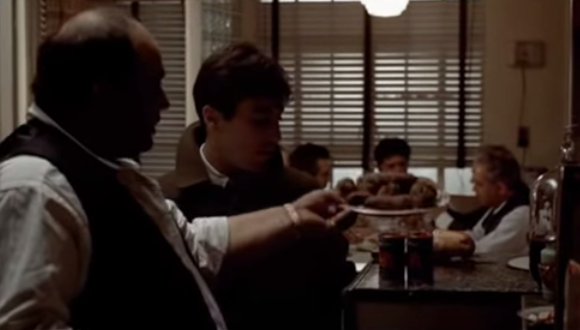Many think the 1958 title game, the overtime thriller between the Colts and Giants, is the greatest game in NFL history. I’ve never quite bought into it. If you’re going to convince me, you need to show me something measurable, not just say, “Well, Pete Rozelle always said . . . .” Put it this way: The league had bigger attendance increases after the ’56 (11.2 percent) and ’57 (6.0) championship games than it did after the ’58 game (4.5). How is that possible – I mean, if it really is the game that had the greatest impact? (It certainly wasn’t the greatest game from an artistic standpoint. There were eight fumbles that afternoon and seven turnovers.)
For me, the Greatest Game discussion actually begins with two games: the 1966 and ’67 title games between the Packers and Cowboys (who, conveniently for this post, meet in the playoffs Sunday in Green Bay for the first time since the famed Ice Bowl). I look at those ’66 and ’67 classics as a matched set, the NFL equivalent of Godfather I and Godfather II.
For drama, you had both games ending on the goal line — the Packers denying the Cowboys in ’66 to hang on, 34-27, then punching it across in ’67 to pull out a 21-17 win. For star power, you had two Hall of Fame coaches, Green Bay’s Vince Lombardi and Dallas’ Tom Landry, plus 12 Hall of Fame players (though Packers fullback Jim Taylor played in only the first of the two games).
Beyond that, you had — in the Ice Bowl, at least — the granddaddy of all matchups: Man vs. Nature. It wasn’t just cold that day at Lambeau Field, it was inhumanly cold, with the wind chill plunging to minus 50 (depending on your source). And this, mind you, was before all the super-duper, will-keep-you-warm-on-Mars thermal wear they use now.
The games also gave you a glimpse of the more racially diverse NFL of the Future. Both rosters were well-stocked in ’67 not just with black starters (15 in all) but with black stars — defensive end Willie Davis, linebacker Dave Robinson, cornerback Herb Adderley, free safety Willie Wood and running back-return man Travis Williams for the Packers and wide receiver Bob Hayes, running back Don Perkins, cornerback Cornell Green and free safety Mel Renfro for the Cowboys. Most are in Canton. (And I’m not so sure Perkins doesn’t belong, too. He was No. 5 on the NFL’s all-time rushing list when he retired — at 30 — after the ’68 season.)
What’s criminal is that football fans can’t just sit down and watch these games — in their entirety — and judge for themselves how great they were. The league and TV networks really dropped the ball on this one. Does a tape of either game still exist? If so, I haven’t seen (or heard of) it.
Instead, we have often-shown clips of Robinson pressuring the Cowboys’ Don Meredith into a game-ending interception in ’66 (and Landry’s subsequent grimace) and Starr squeezing over from the Dallas 1 in ’67 — assorted bits and pieces that don’t come close to adding up to The Whole.
Imagine having to watch The Godfather like that — just a few memorable scenes rather than the whole glorious epic. (No Clemenza, for instance, showing Michael how to cook meatballs and sausages in tomato gravy.) Think it would alter the viewing experience?
Anyway, that’s my spiel on the ’66 and ’67 NFL title games, the Godfather I and Godfather II of pro football history. We may never see two better title games back to back, never mind between the same teams. (Compare them to the consecutive Super Bowl duds between the Cowboys and Bills or the mostly forgettable string of Lions-Browns championship games in the ’50s.)
It was the beginning of the Super Bowl era, and the Packers and Cowboys set the bar incredibly high. If you want to read more on the subject, here’s a link to Bob O’Donnell’s piece about Starr’s sneak, taken from our 1990 book, The Pro Football Chronicle. It’s one of the best things Bob ever did, and that’s saying a lot.


